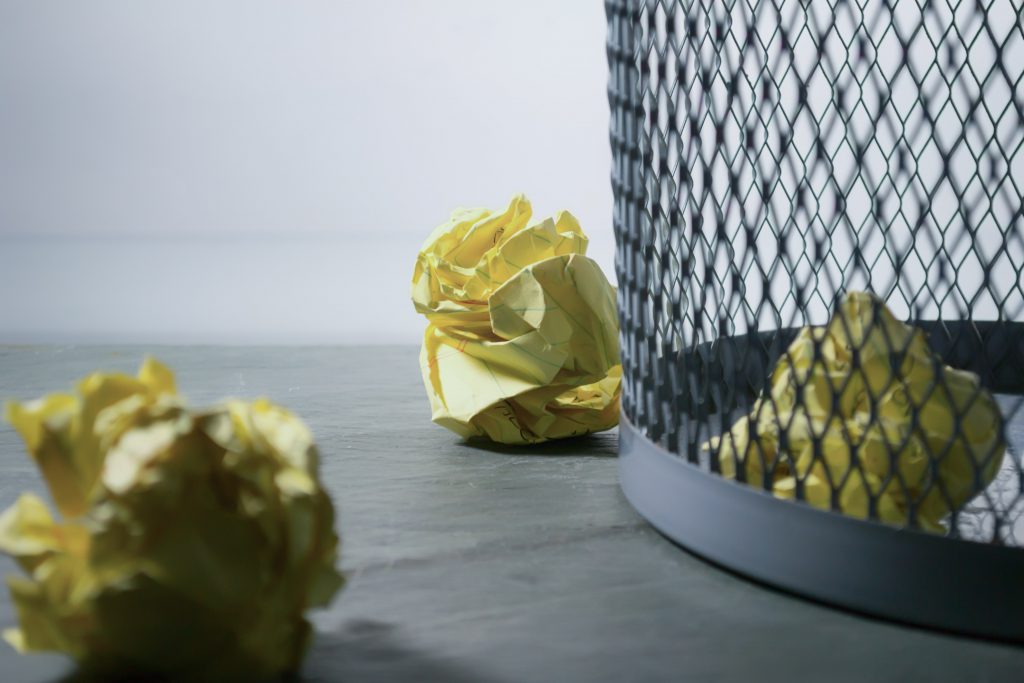Trash and Try Again
Notes on Revision
by Lindsey Harding

Photo by Steve Johnson on Unsplash
I learned the value of revision as re-seeing and re-writing the hard way in graduate school. I earned my MFA at Sewanee University’s School of Letters, which meant for four summers, I participated in a rigorous summer camp for writers and book nerds, two classes each summer for six demanding weeks. I loved every minute of it. Well, except for one.
My first summer, I was taking a fiction workshop with the writer Ellen Slezak. In workshop one day, I received feedback on a short story that would eventually be my first online publication (in a journal that no longer exists). I was working on revising “Morning Routine” based on comments from Ellen and my peers when I lost the draft. Something happened with my computer, and it didn’t save. I remember being really excited about how far the story had come, where I was headed with it. Then it was gone. The whole thing—poof. All those pages, all that time—gone.
I wanted to throw my computer through a window or wall. I wanted the time back that I had poured into it. Mostly, I wanted the words back. They were good! How would I be able to compose something so good again?
Instead of latching onto all of the witty phrases and lovely lines I had composed previously, I was free to reimagine and rewrite.
I didn’t destroy my computer. Instead, I started over. Once I got over the initial loss of that draft and sunk into what I know now as a “blank draft revision,” I realized what I had written before wasn’t all that good. It had a long way to go, in fact. And now, instead of latching onto all of the witty phrases and lovely lines I had composed previously, I was free to reimagine and rewrite. In this freedom, I found it easier to move beyond safe first choices, familiar imagery, and clever sentences. I had gotten all of those out of the way, and now I could enter into the storyscape again and figure out what the story needed to be the story it could be.
This experience taught me something about myself and something about revision.
- First, I learned that I love revision. I do my best work in revision. Once I get past that hurdle of getting words down on a page, it’s go time. That’s when the fun, the magic happens. Thanks to this experience, I’m no longer afraid to cut mercilessly, to get back into a draft and tear it apart so that I can rebuild it better.
- Second, I learned that revision is a three-dimensional process. You open a draft and the black words appear on a white screen, but really it shimmers as its own holodeck. As the writer, you can enter the draft, push here, pull there, connect and separate, trash and try again.
It took losing a draft for me to learn the value of revision—and I remain incredibly thankful for that lesson, however devastating the experience was at the time. In a later summer, Ellen would ask us to highlight revisions from first draft to final draft, and, proudly, I submitted a story crawling with yellow highlighting. Easily 80–90% of the story had changed over the course of the semester. Now, that’s what I aim for with every writing project—substantive change in revision. In my published work, I can spot kernels and nuggets of initial drafts, but the rest comes from revision.